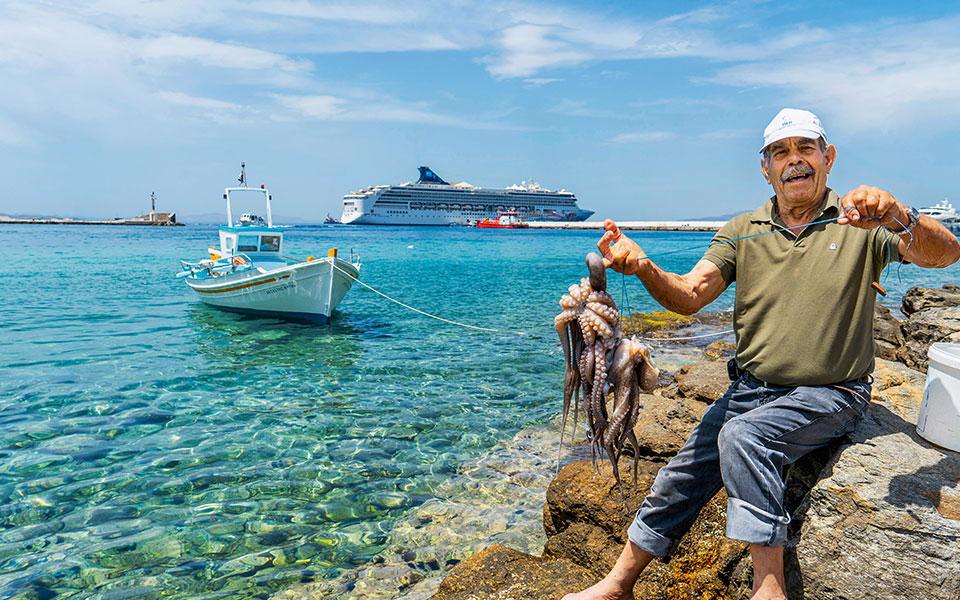Thirty-three islands comprise the Cyclades, which lie in the heart of the Aegean. While each island has unique features, the island group as a whole is mainly rocky and arid. Nonetheless, you’ll find green exceptions where abundant natural springs benefit crop and livestock farming.
Overall, however, the people of the Cyclades have tended to seek their livelihoods at sea, either as sailors or as fishermen. The region’s maritime history has also been responsible for shaping its societies and, by extension, its cuisine, both of which were significantly influenced by Frankish and Venetian rule, as well as by sundry other nationalities that passed through the ports here. In the past, local farms produced grains and a lot of fruit – mainly summer fruits such as grapes and figs – which were used to barter for goods from nearby islands.

© Food styling: Tina Webb, Photo: George Drakopoulos
Long spells of sunshine allowed residents to dry octopus, tomatoes, okra, grape must and many more products so they would keep longer and exhibit more flavor. Most of the recipes of the islands’ colorful rustic cuisine are still made with local vegetables that do well in arid climates, and with seafood that is prepared in various ways: boiled, baked, fried, or grilled on charcoal and served with a simple sauce of olive oil and lemon.
Pulses and red meat (mostly lamb or goat) are sealed in traditional clay pots that look like ancient amphoras, or in covered steel vessels and baked slowly overnight in a wood-fired oven. These dishes are still classics on islands like Sifnos and Serifos.
Unlike in other parts of Greece, the savory pies in the Cyclades tend to be small, bite-sized affairs that are fried, rather than the big trays of baked stuffed filo that dominate in other regions.
Cheese, either homemade or from one of the many cottage dairies, is served at almost every meal. From Ios to Tinos and Syros, there’s a plethora of delicious cheeses made from sheep’s and goat’s milk, as well as a handful of notable cow’s-milk cheeses, such as those made on Andros. Cheese is also used in desserts such as melitinia (tiny treats customarily served at Easter).
Sundry almond delights and spoon sweets, the latter including a type made with fragrant citrus blossoms, steal the show in the category of homemade treats.
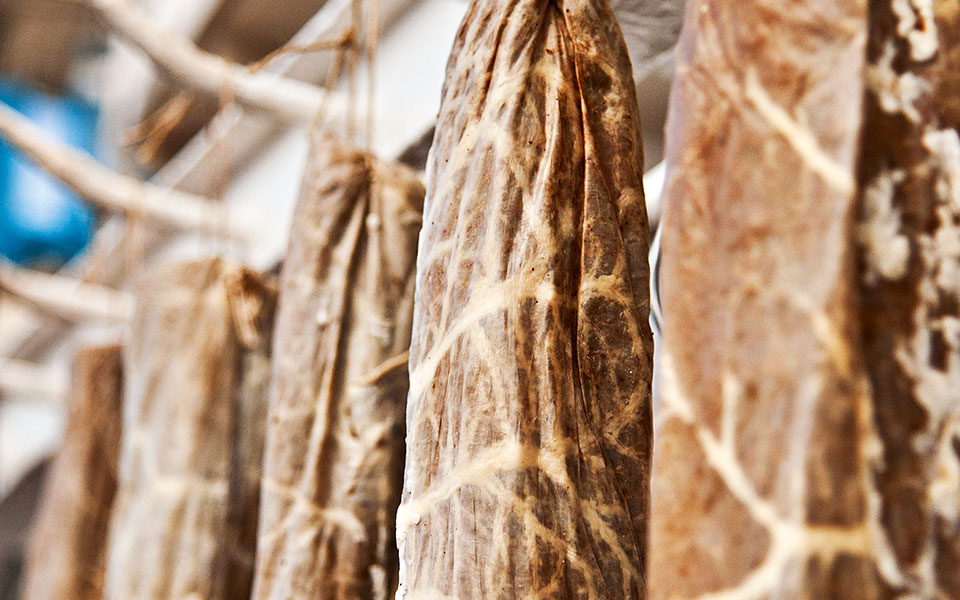
© Evelyn Foskolou
Certified Products
You mustn’t leave the Cyclades without trying its protected designation of origin (PDO) products, such as the famous kopanisti, a tangy spread made from matured cheese of goat’s and sheep’s milk, or the louza, a gorgeous cured meat scented with cinnamon, cloves and pepper.
Wild capers and thyme honey are also a must, as is a packet of split peas from Santorini, so you can make your own fava dip, and some San Michali cheese from Syros – the latter two also enjoy PDO status.
The Cycladic islands are renowned for their white wines, the most famous of which are those made with the Assyrtiko or Monemvasia (Malvazia) grape varieties.
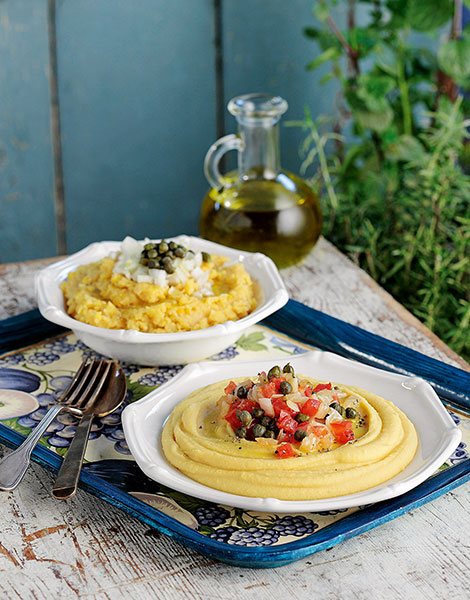
© George Drakopoulos
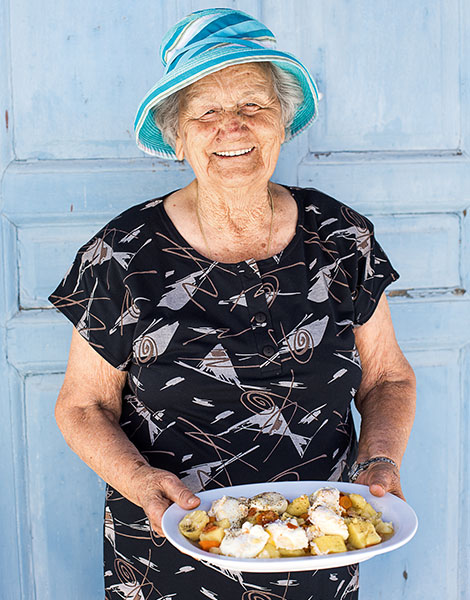
© Christina Antoniadou
SIGNATURE DISHES
If you’re visiting Sifnos, make sure you try the revithada, a rich chickpea stew that is cooked very slowly in a ceramic pot in a wood-fired oven. Naxos is renowned for its rosto, a pork dish with a tomato sauce, served with locally grown spunta potatoes, while on Andros, the specialty is froutalia, a hearty omelette that’s either fried or baked, made with seasonal vegetables, local cheese and sausage.
On Santorini, tomatoes are sun dried and then placed in jars with olive oil to give them a longer shelf life. Tomato fritters, made either with fresh or sun-dried tomatoes, depending on the season, are a popular meze.
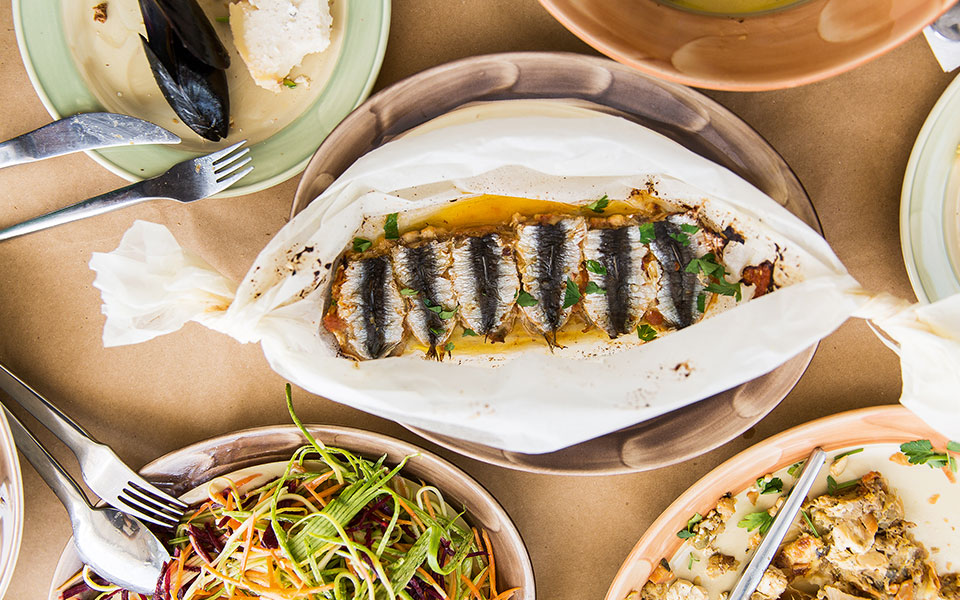
© Dimitris Vlaikos
WHERE TO EAT
At Allou Gialou (Tel. (+30) 22810.711.96) in Kini on Syros, you’ll find great local products and fresh seafood, such as roasted calamari with sea urchin.
In the main town of Mykonos, Kalita (Tel. (+30) 22890.271.02) is known for its modern take on traditional recipes.
Kimolos is a tiny island, but it boasts amazing food. Head to Avli tou Samplou (Tel. (+30) 22870.516.66) for lamb meatballs in tomato sauce and fried local cheese flavored with summer savory.
The flavors of the Cyclades are on hand at Marathia (Tel. (+30) 22830.232.49) on Tinos’ Aghios Fokas Beach. Highlights include the kariki, a tangy local blue cheese, the grilled artichoke and the squid cooked in its ink.
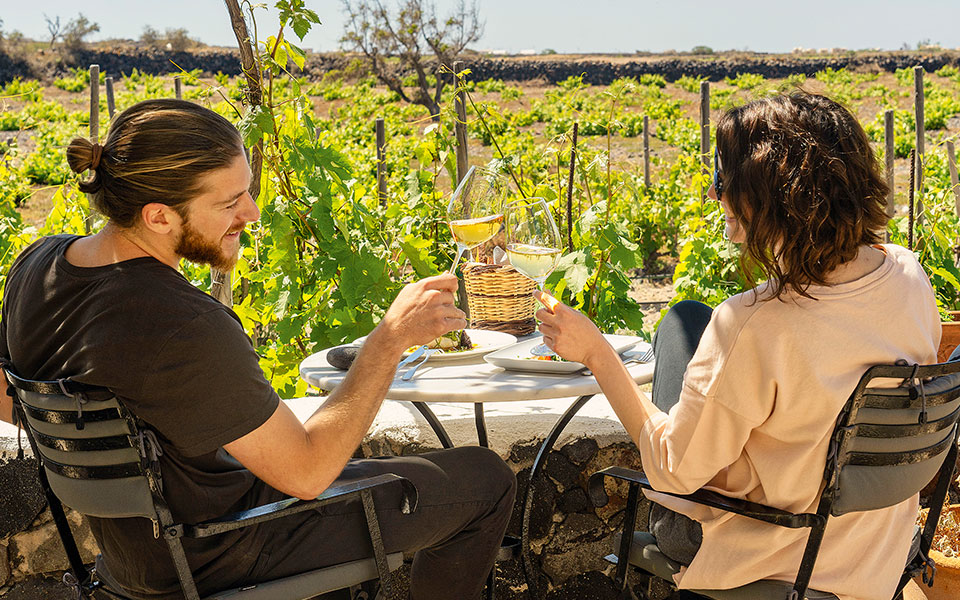
© Perikles Merakos
WINE: ASSYRTIKO OUT OF THE ASHES
by Yiannis Karakakis, MW
The Cycladic islands are not simply a paradise on Earth for tourists, with all those gleaming sandy beaches, crystal-clear waters, idyllic blue-and-white houses and premium hotel resorts. They are are also a five-star destination for all wine enthusiasts seeking to explore unusual flavors.
The epicenter of quality wine production in the Cyclades is the volcanic island of Santorini, reborn out of the ashes of a major volcanic eruption. Santorini’s heart-stopping beauty may be hard to put into words, but you can put it into a glass; drinking chilled Assyrtiko while watching the most amazing sunset from Oia on the northernmost tip of the island is an amazingly pleasurable experience.
The Assyrtiko variety is the leading lady of the island, producing both dry and sweet wines, and accounting for 65 to 70 percent of the total 1100 hectares of plantings. One look at the old, ungrafted, basket-trained vines, some of them sitting on 400-year-old roots, is enough to let you know that Assyrtiko has always grown here.
Other varieties able to cope with the inhospitable soils of this ancient wine island include Athiri, Aidani and, increasingly, Mavrotragano; they are all worth seeking out.
Santorini may be the star of the show, but other islands are emerging with unique varieties and sublime handcrafted wines.
In the lunar landscape and the granitic soils of the Falantados area on the island of Tinos, a number of grape varieties with tongue-twisting names like Aspro Potamissi, Koumariano and Rozaki, as well as sublime examples of Assyrtiko and Mavrotragano, offer memorable experiences to those seeking different flavors.
Paros is another important wine-producing island. In this equally arid terrain, vines are trained using a traditional growing system known as aplotaries that forces them to grow horizontally along the ground rather than vertically so as to protect them from the strong winds. The island produces low yields of mainly Monemvasia white and Mandilaria red varieties. Paros’ PDO status is the only one in Greece that allows for a blend of white and red varieties in the production of dry red wines. On Paros, the Moraitis family has consistently produced wines with character, and which exhibit complexity and a great quality-to-price ratio.
The wealth of choices available on other Cycladic islands such as Syros and Milos suggests that, if you’re looking for very good wines from the Cyclades, it pays to cast a wide net.

